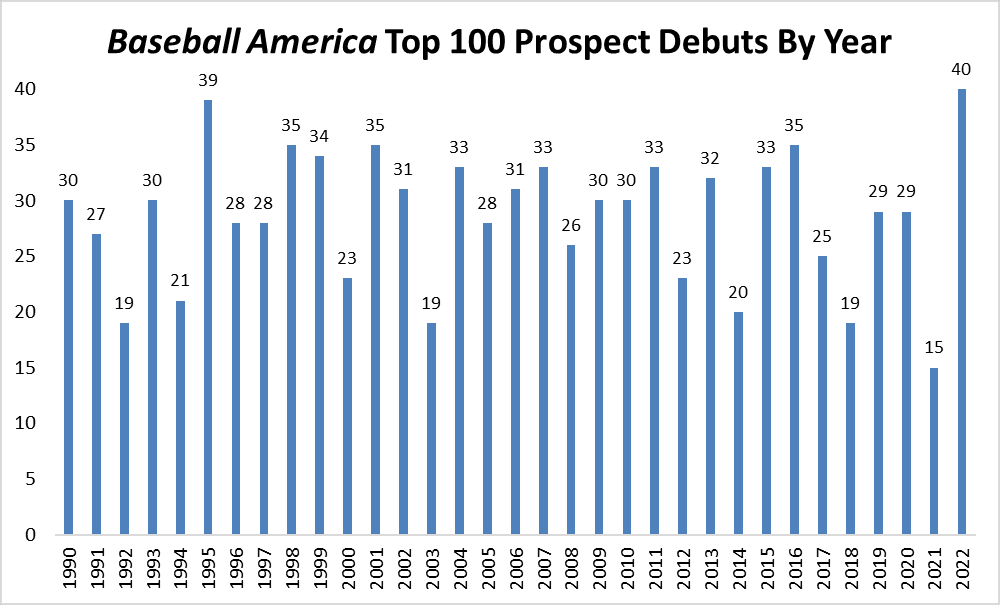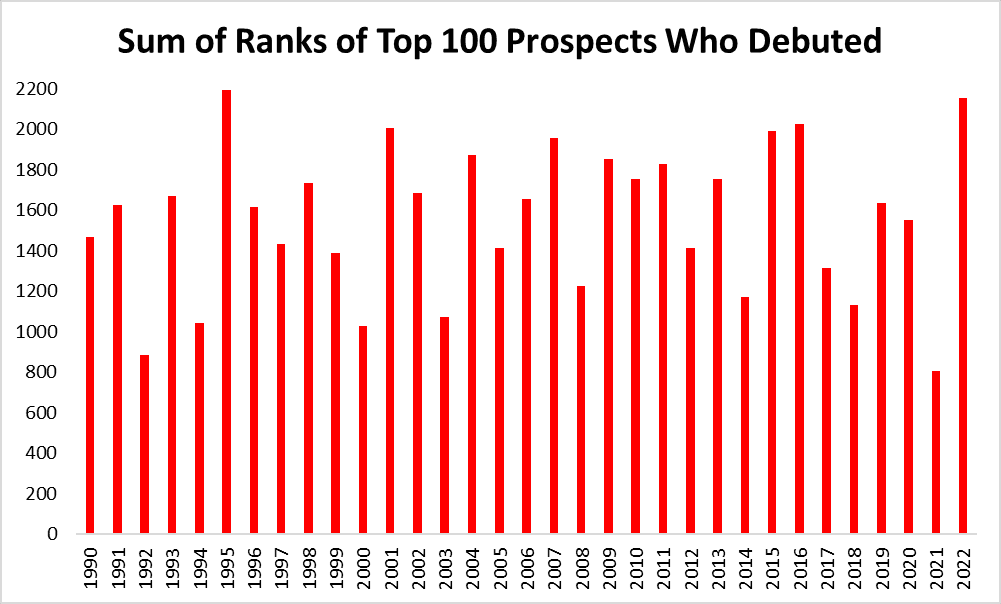At 4:53 p.m. ET on Friday, after news of the last flurry of buzzer-beating trades trickled out on Major League Baseball’s frenetic deadline day, MLB’s Twitter account posed a question: “Was this the best trade deadline ever?”
“Best” is subjective, so fans of different teams would (and did) have different answers. Dodgers fans are probably pleased that 10 fingers are no longer enough to count the MVP and Cy Young awards won by players on their team’s roster. Nationals and Cubs fans could be forgiven for not knowing who’s on their teams’ rosters. Rockies fans might not have noticed that the trade deadline passed. Although it’s tough to measure how good the deadline was, we can quantify how active it was. This may or not have been the best trade deadline ever, but it undoubtedly was the most trade deadline ever. There’s never been a busier deadline, or one in which more same-season production changed teams.
I’ve broken down frantic deadlines before, but none can match last week’s baseball bacchanal. This deadline’s deals had everything: superstar sluggers and speedsters, aces old and young, and blue-chip prospects. The best teams got better, the bubble teams tried to keep pace, and two teams pulled off unprecedented teardowns. We saw trades between teams in the same cities and divisions, teams swooping in to steal stars from direct competitors, and journalists falling for fake news “broken” by knockoff Twitter accounts. The Cubs and White Sox made as many deals with each other in two days as they had in the preceding 23 years. The Mariners made a deal with a division rival they’d come back to beat the night before. The Dodgers traded for more net year-to-date WAR and the Nationals traded away more net year-to-date WAR than any team ever had over a two-day span (with the Cubs’ sell-off not far behind the Nats’). Every single team—yes, even the Rockies—made a trade on deadline day or the day before. A record 10 All-Stars from the current season have already relocated, and 23 past or present All-Stars were traded during deadline week, with a record 15 exchanged on deadline day alone. Many of those players are already thriving in new threads.
We can dive deeper. The graph below—which excludes 2020, because last year’s subdued deadline was delayed until August 31, a little more than a month into the pandemic-compressed season—shows the number of trades and the total year-to-date Baseball-Reference WAR produced by traded players in each July dating back to 1986, when the deadline was shifted from June 15 to (typically) July 31. (These totals include 2016 trades made on August 1, which was the deadline that year because July 31 was a Sunday.) Even though this season’s deadline was pushed up to July 30 to avoid overlapping with weekend day games, there were still more trades made (62) and year-to-date WAR moved (58.2) this July than in any earlier year. And it wasn’t close: The previous highs were 46 trades and 41.6 WAR in 2018 and 2015, respectively.

We can also look at this in terms of total players traded. The next chart shows the annual number of players (including players to be named later) and the number of major league players involved in July trades. In total, 158 players moved at this year’s deadline, easily exceeding the previous record of 128 in 2018. Teams traded 87 players who’d played in the majors prior to the deadline, which is also a record, though it wasn’t far removed from 2000’s total of 84.

The disconnect between the number of players traded and the number of big leaguers traded may have stemmed both from the prevalence of teams that turned the page on short-term contention and opted not to target established players in return for their veterans, and from some teams’ increasing reluctance to part with top prospects, particularly for players on expiring contracts. Despite this year’s record trade volume, only six prospects (Austin Martin, Spencer Howard, Nick Madrigal, Keibert Ruiz, Josiah Gray, and Simeon Woods Richardson) ranked in the preseason top 100 by Baseball America changed teams. That’s in line with the annual average of 5.9 through the eight previous deadlines dating back to 2012, and it’s fewer top prospects than teams traded in 2015, 2016, and 2017. In some cases, clubs leaned toward quantity over quality in the young players they picked up: The Yankees, for instance, parted with six prospects to land large lefty sluggers Joey Gallo and Anthony Rizzo, but they didn’t trade their three representatives on BA’s preseason or midseason lists.
Many executives—including long-tenured team leaders Billy Beane and Kenny Williams—echoed the idea that this was a deadline like no other. In general, deadline activity has ramped up over time as the number of teams in the majors and the size of the playoff field have grown, giving more teams a realistic shot at a postseason appearance (even if it’s only a trip to the wild-card game). There are also simply more major leaguers used per year than there were earlier in the 30-team era, thanks to changes in pitcher usage and accelerated roster churn. But the 2021 trade deadline stands out even compared to the elevated activity of the time of 10-team playoffs. What could account for last week’s orgiastic trade market? As is often the case with statistical outliers, it’s likely that a confluence of factors contributed to the results, amplifying the frenzy of last week. Let’s run through a few.
If you cast your mind back to pre-pandemic times, you may recall that MLB eliminated the August 31 waiver-trade deadline in 2019, forcing teams to get all of their deals done by the end of July. Although the month leading up to the 2019 deadline wasn’t unusually busy, the day of the deadline was. Perhaps some of what we saw this year was a product of teams adjusting to the added urgency of the unified deadline in the second “normal” season for which it was in effect.
It’s also possible that the shortened 2020 season—and the financial fallout from a year without fans and the uncertainty about attendance that lingered into this season—gummed up the works in a way that led to a backlog of potential trades. (The trade market was especially stagnant during the winter before COVID, too.) The 1995 deadline, which arrived on the heels of an extended work stoppage, was the busiest up to that point, perhaps for similar reasons. Speaking of work stoppages: There’s a chance that one will happen next year, which may have made some teams more motivated to win while they can.
Two other special circumstances may have played a part in this year’s uptick in trades. In a decision designed to bring greater exposure to the amateur draft, MLB moved the three-day event from its customary slot in the first week of June to mid-July. More time devoted to draft prep in June left less time for trade talks, which may have postponed some swaps that could have happened sooner (though teams always tend to wait until the last minute to make most of their moves). This season has also been marked by inflated injury rates for both pitchers and hitters, a possible by-product of 2020’s strange schedule. Those injury-list losses created holes that contending teams were eager to fill. Fears that pitchers who had light workloads last year would wear down later this season, coupled with concerns of a still-unobserved spike in injuries related to eradicating sticky stuff, may have given teams that hope to play into October even greater incentive to stockpile pitching.
Lastly, this year’s competitive picture created conditions that were ripe for finding fits. Through Wednesday’s games, 14 teams had playoff probabilities in the double digits and the rest languished below, setting up a symmetry between hopeful and hopeless teams. In the next two days, 16 teams tried to bolster their 2021 chances (with Atlanta and Seattle saying “Never tell me the odds”), 13 teams set their sights on the future, and the Cardinals confusingly didn’t do either.
Although this year’s playoff field seemed unusually close to set leading up to the deadline—according to FiveThirtyEight’s “Doyle Number,” a measure of whether teams should be buyers or sellers, few clubs occupied the murky middle ground—some of the seeding was still apparently up in the air, and a few of the teams still jockeying for position had historically and/or recently been big buyers. The Dodgers (who are fighting for first place) and the Yankees (who are chasing two teams in their division and in the wild-card race) were two of the deadline’s busiest and most-improved teams, and their upgrades put pressure on division rivals and wild-card competitors to make moves of their own. In addition, the deadline was supercharged by the Cubs and Nationals, two teams that found themselves (or, in the Cubs’ case, put themselves) in the unusual position of being out of the race and ready to rebuild but also still boasting several appealing players, many of them impending free agents. The Nats and Cubs so spectacularly folding their current losing hands made up for the Rockies holding on to Trevor Story, Jon Gray, Daniel Bard, and other potential trade targets while perplexingly proclaiming themselves “a very talented team.”
Trade activity ebbs and flows from year to year, and some anomalous deadlines (such as those in 2000 and 2006) stood out from their immediate predecessors without signaling the start of a trend. For all of the reasons cited above, last week’s excitement was probably a singular experience, not the new normal. We can’t count on future deadlines being as exciting as 2021’s, just as we can’t count on every regular season ending as dramatically as 2011’s. But both of those were wild while they lasted—and just like the last leg of that 10-year-old pennant race, the 2021 trade deadline will make for fun flashbacks for decades to come.
Thanks to Dan Hirsch of Baseball-Reference for research assistance.
